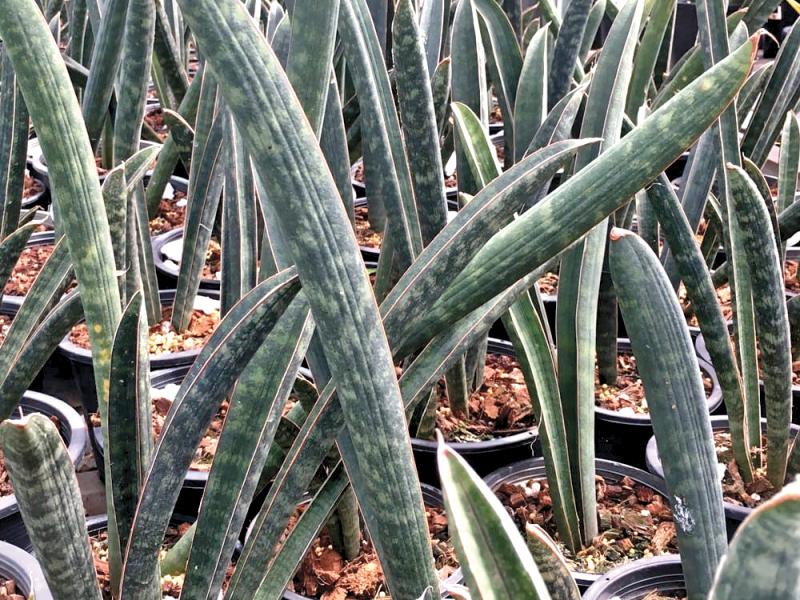In the garden we often try for a home run, but end up striking out. Strike in baseball originally meant any time the batter hit or struck the ball.
So batters could have strike fouls as well as strike hits. Around the 1890s, probably from foul strike, it was shortened from foul strike to strike.
One plant that will almost never strike out is the easy-to-grow Sansevieria, also called snake plant or mother-in-law's tongue, and for baseball fans there is Sansevieria hallii or Baseball Bat Sansevieria.
This plant grows several broad channeled blue-gray leaves about two inches wide and a foot tall that are often an inch thick and resemble a baseball bat.
The leaves contain strong fibers that were used by African tribes to make rope and string for their bows.
With its upright, firm leaves it looks good in narrow pots.
Even though it thrives with lots of sunlight, it also grows perfectly well in dimly lit rooms. It is one of the best houseplants to purify the indoor air as it absorbs many toxins, including formaldehyde, xylene and toluene.
The microscopic pores on the plant's leaves only open at night so that moisture doesn’t escape during the hot daytime.
Because of this, the plant releases its stored oxygen at night, making it a good bedroom plant.
To prevent root rot, plant it in potting soil that drains quickly such as a mixture of regular potting soil and cactus potting soil.
This is one houseplant that grows well without fertilizer, but will grow faster and larger if you fertilize with a cactus fertilizer in early spring and again in midsummer.
These plants prefer to be pot bound, so they may not need repotting for many years. Baseball Bat Mother-in-law's Tongue is easy to propagate.
You can simply divide the root ball and pot up each stalk directly in potting soil. A leaf placed in a vase of water will root in a few weeks.
Be sure to change the water every few days so it does not get stale. Once it forms roots, pot it up.
You can bring it outdoors during the summer once the night temperatures are constantly above 50 degrees. Even though Baseball Bat Sansevieria is tough, it cannot live in very cold temperatures so it must be brought inside before frost.
Older plants will bloom with fragrant tube-shaped flowers as long as the plant is pot bound.
Keep your Baseball Bat Sansevieria in bright light. Even though it is more tolerant of cold than many of its relatives, it still needs protection from cold drafts.
Water once a month and let the soil dry out between watering. Sansevieria has only two weaknesses, excessive cold and excessive watering; everything else you throw its way will be taken in its stride and it is therefore almost impossible to kill.
Snake plant will thrive in either very bright light or almost dark corners of the house. An ideal container plant, it is excellent in a grouping, and will grow equally well on the floor or on tabletop displays. These plants are also drought resistant.
Snake plant is mildly toxic to people, dogs and cats if they eat the leaves, although many other houseplants are far more toxic.
They are actually very low on the toxicity scale, perhaps giving you a mild rash when handling the leaves, but only if you are overly sensitive. Pets will usually get mild stomach irritation if they eat the leaves.
For a low-maintenance houseplant that will clean the air of toxins, try a Baseball Bat Sansevieria and you will ‘knock it out of the park’ with a gardener's home run.




















































